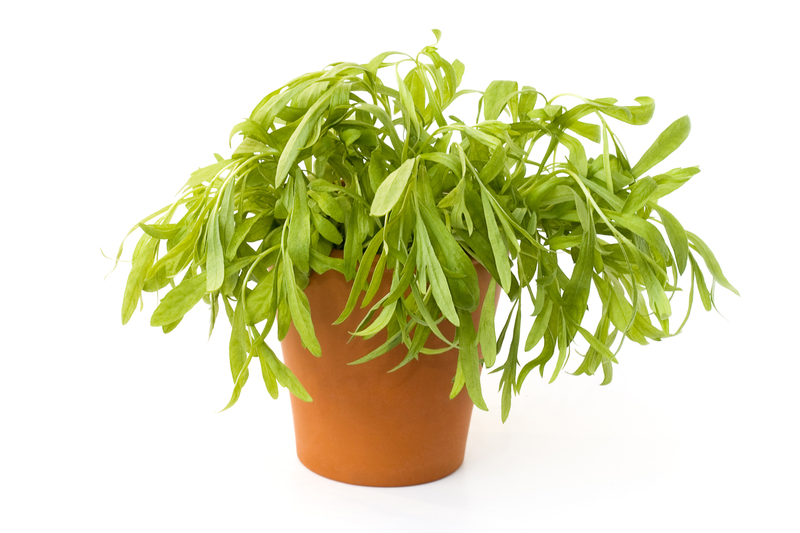Turning the Tide: Managing Strong Winds in Your Garden
Posted on 18/08/2025
Turning the Tide: Managing Strong Winds in Your Garden
Wind can be a gardener's fiercest challenge or a force to harness for stronger, vibrant, and resilient plants. In many regions, strong winds can wreak havoc on gardens -- from uprooting young saplings to knocking over delicate flowers, robbing the soil of vital moisture, and even polluting beds with windborne debris. But these gusts need not be a gardener's nemesis. With thoughtful planning, clever techniques, and a robust strategy, you can turn the tide and transform your outdoor space into a thriving, wind-resistant landscape.
In this comprehensive guide, we explore various tactics for managing strong winds in your garden. Whether you're dealing with occasional gusts or battling relentless breezes, you'll find actionable insights here to protect, adapt, and nurture your green haven.

Table of Contents
- Why Managing Strong Winds Matters
- Understanding How Wind Affects Your Garden
- The Fundamentals of Windbreaks and Shelterbelts
- Selecting Wind-Resistant Plants
- Structural Solutions: Fences, Screens, and Netting
- Optimizing Garden Layout for Maximum Wind Protection
- Retaining Soil Moisture in Windy Gardens
- Storm-Proofing Plants in High-Wind Seasons
- Long-Term Strategies for Windy Gardens
- Frequently Asked Questions
Why Managing Strong Winds Matters in Your Garden
Wind is often underestimated as a gardening challenge. Besides its capacity to physically damage plants -- snapping branches, toppling trellises, and flattening crops -- wind also speeds up water loss from both soil and leaves, increasing drought stress. It can erode soil, scatter seeds and mulch where they're not wanted, and blow in pests and fungal spores from miles away.
Proactive wind management in your garden translates into:
- Higher crop yields and healthier ornamental plants
- Reduced water requirements
- Stabler, richer soil structure
- Minimized pests, disease, and storm-related losses
Understanding How Wind Affects Your Garden
Microclimates, Wind Tunnels, and the Lay of the Land
Before implementing defenses, it's crucial to observe your specific site conditions. Every garden, even on a seemingly uniform plot, has microclimates--pockets shielded from or exposed to the wind due to structures, trees, or topography. The way wind moves across your garden is shaped by:
- Surrounding buildings, fences, and trees: Can direct or funnel wind, creating wind tunnels or calm areas of stillness.
- Elevation and slope: Higher ground is often buffeted more than sheltered low spots.
- Cultural features: Paved surfaces and water bodies can affect wind patterns and humidity.
Identifying Prevailing Winds
Take time to determine the direction and strength of prevailing winds throughout the year. Keep a journal noting which garden sections are most affected and how plant growth responds.
The Fundamentals of Windbreaks and Shelterbelts
What Is a Windbreak?
A windbreak is any structure--living or non-living--designed to disrupt the flow of wind and shield what's behind it. Strategic windbreaks can reduce wind speeds by up to 60%, benefiting your plants in both winter and summer.
Types of Windbreaks
- Living windbreaks: Rows of trees, dense hedges, or shrubs that slow wind and provide habitat for birds and beneficial insects.
- Artificial screens: Fences, walls, pergolas with climbing plants, and wind netting provide instant, adjustable shelter.
Designing Effective Windbreaks
- Aim to filter, not block, the wind--solid walls create dangerous turbulence downwind, while porous screens gently reduce wind speed.
- The height of your windbreak determines the sheltered zone--wind protection typically extends 5 to 10 times the height of the barrier.
- Stagger multiple layers for best effect: tall trees/shrubs in back, then medium and low-growing plants for graduated shelter.
Selecting Wind-Resistant Plants for Blustery Gardens
Some plants naturally withstand and even thrive in wind-exposed gardens. Choose wisely for less maintenance and more resilient plantings.
Tough Perennials and Shrubs
- Ornamental grasses (Miscanthus, Calamagrostis, Stipa) are flexible and sway gracefully with the breeze.
- Rugosa roses, viburnum, cotoneaster, boxwood, and juniper are well-known for wind-durability.
Wind-Tolerant Trees
- Hawthorn, pine, willow, and oak have deep roots and strong, pliable branches that survive strong gales.
- Evergreens offer year-round protection and stability.
Success with Annuals
- Opt for compact, sturdy varieties -- such as calendula, nasturtium, alyssum -- rather than tall, leggy types.
- Plant in groups for mutual support and to reduce exposure.
Vegetables & Herbs for Windy Spots
- Kale, Swiss chard, and leeks are tough enough to handle most winds.
- Grow leafy crops like lettuce behind more wind-tolerant rows for shelter.
Structural Solutions: Fences, Screens, and Netting
While living windbreaks take years to establish, physical structures can give immediate protection from harsh winds:
- Slatted wooden fences: Allowing some air through is better; solid barriers can create swirling turbulence behind them.
- Hurdle fences and bamboo screens: Lightweight, rustic, and easy to move or adjust seasonally.
- Windbreak mesh/netting: Durable plastic or woven fabric rolls can be quickly erected and removed.
- Trellising for climbers: Plants like honeysuckle or clematis can clothe screens, enhancing both shelter and beauty.
- Moveable panels: Temporary, adjustable options for new plantings or vulnerable crops.
Install these supports perpendicular to the prevailing wind and anchor them well for maximum effectiveness.
Optimizing Garden Layout for Maximum Wind Protection
Smart Orientation and Plant Grouping
The way you arrange your garden beds has a significant impact on how winds affect your plants. Here's how to plan a wind-smart garden layout:
- Place taller, wind-resistant plants and windbreaks on the windward side of your garden.
- Stagger plantings, zigzag pathways, and curved beds break up wind flow better than straight lines.
- Group delicate or susceptible plants behind tougher species for natural shelter.
- Keep beds small and deeply mulched to reduce soil evaporation and erosion.
Raised Beds and Cold Frames
- Raised beds improve drainage and can be made with windbreak edges.
- Cold frames and cloches shield tender seedlings and can double as mini wind shelters.
Retaining Soil Moisture in Windy Gardens
Strong winds dry out the soil at a rapid rate, stressing plants and reducing yields. To counter this:
- Mulch heavily around all plants with organic matter like bark, compost, straw, or leaf mold.
- Water deeply and less frequently to encourage roots to grow deeper, out of the desiccated topsoil.
- Avoid over-tilling which exposes soil to further drying and erosion.
- Use groundcovers to anchor soil and shield it from the wind's full force.
Plant windbreaks or dense hedging to trap humidity and reduce wind speed near soil level--vital for seed germination and young plants.
Storm-Proofing Plants in High-Wind Seasons
When gale-force winds are forecast, it's wise to take extra steps to prevent garden devastation:
- Stake young trees and top-heavy plants with flexible ties to allow some movement but prevent uprooting.
- Prune weak or dead branches which are most likely to snap in a storm and cause damage.
- Move container plants and delicate potted herbs to a sheltered spot or indoors if possible.
- Harvest mature fruits and vegetables to avoid total loss.
- Temporarily cover beds with wind-permeable garden fleece or mesh to reduce breakage.
After the storm, inspect for damage, reinforce supports, and help plants recover with watering and light feeding.
Long-Term Strategies for Living with Wind in Your Garden
The most resilient gardens are those where wind-tolerance and protection measures are built into the plan from the start. Keep these principles in mind:
- Continually monitor wind conditions as climates shift; adjust plant selections and defenses accordingly.
- Layer windbreaks and diversify species for robust, biodiverse shelters.
- Encourage healthy root systems for stability by minimizing disturbance and feeding the soil.
- Sow cover crops or green manure between seasons to protect and revitalize soil structure.
- Practice no-dig methods and perennial planting to minimize soil disturbance and erosion risk.
With adaptation and foresight, your garden can become not just wind-resistant, but a flourishing example of harmony between plant and element.
Frequently Asked Questions: Mastering Windy Garden Management
Q: What are the best plants for exposed, windy gardens?
A: Choose native grasses, tough perennials like lavender and echinacea, woody shrubs (hawthorn, juniper, cotoneaster), and wind-tolerant trees (oak, pine, willow). Always prefer locally adapted varieties which are naturally more resilient to wind and weather extremes.
Q: Can solid fences protect my garden from strong winds?
A: Solid barriers may seem protective but often cause increased turbulence behind them. Use semi-permeable fences or living screens for better wind reduction while avoiding damaging eddies and backdrafts.
Q: How can I protect my vegetable garden from strong wind damage?
A:
- Plant in groups for mutual shelter.
- Use sturdy support stakes and hoops for beans and climbers.
- Sow wind-tolerant varieties closer to the windbreaks and shield leafy, fragile crops behind stouter rows.
- Apply plenty of organic mulch to retain soil moisture and limit erosion.
Q: How do I make an instant windbreak?
A: Garden windbreak netting, trellises with fast-growing climbers, or even movable hurdle fences can be installed quickly to protect young plants or vulnerable beds. For a temporary fix, consider using shade cloth or mesh that lets some wind through while mitigating force.

Conclusion: Embrace the Wind, Protect Your Eden
Strong winds don't have to spell disaster for your green retreat. By combining thoughtful design, the use of tough plants, well-chosen structures, and attentive care, managing strong winds in your garden becomes not just possible -- but a chance to cultivate a more resilient and beautiful space. Each gust need not be your foe; instead, let it shape your garden, strengthening your plants and skills as a gardener. Turn the tide and help your garden flourish, no matter what the weather blows your way.

